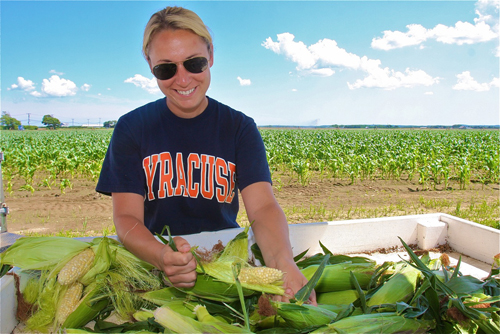New fertilizer designed to better protect L.I.’s groundwater

Local farmers growing sweet corn will have an opportunity to try a new fertilizer this season designed to better protect groundwater and the Long Island Sound, according to a press release from Cornell Cooperative Extension of Suffolk County.
The controlled-release nitrogen fertilizer is designed to break down over time according to the plant’s need for nutrients as opposed to regular fertilizer which dissolves from heavy rain, the release states. Suffolk County’s sandy soil, especially during spring rain, is susceptible to leaching of nitrogen from conventional nitrogen fertilizer.
Suffolk farmers can experiment with the new product at no risk to losing money.
The collaborative project involving Cornell, Agflex and American Fundland Trust is part of the grant-funded BMP Challenge system, which reimburses farmers who experience any reduction in their harvest after implementing the new product.
“The BMP Challenge protects the investment for farmers so they don’t have to ‘bet the farm’ on new techniques,” said Dr. Tom Green, president of Agflex.
Participating farmers will set up a side-by-side comparison with at least 8-planted rows wide running the full length of the field.
“This project will help demonstrate that it is possible to reduce the fertilizers while maintaining profitability,” said David Haight of American Farmland Trust.
Suffolk County farms sold over $300 million in farm products, more than any other county in New York, according to the 2010 U.S. Census of Agriculture, officials said.
Non-point sources of nitrogen, such as fertilizer, accounted for an estimated 72-82 percent of the total nitrogen from Suffolk County into the Sound, according to a model developed by the county with funding from the Environmental Protection Agency.








